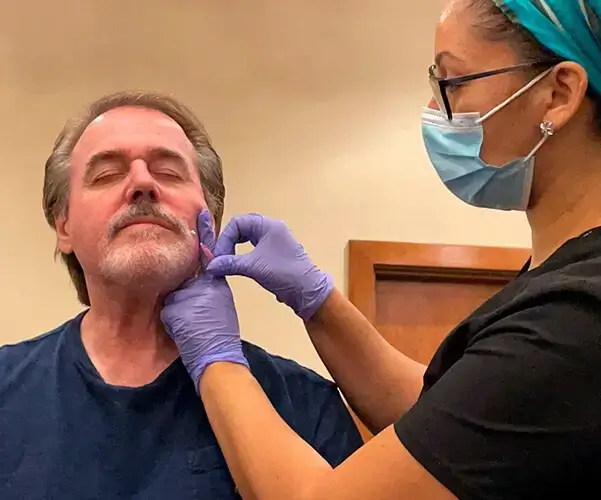Best Treatment for Matted Telangiectasias
By Dr. Stephen Cosentino
PRESIDENT OF EMPIRE MEDICAL TRAINING
Telangiectasia is a common blood vessel condition that affects superficial veins and arteries throughout the body. Medical professionals refer to multiple instances of telangiectasia in the same individual as “telangiectasias.”
Telangiectasias take many different forms. Some are benign and not cause for concern, while others may signal a more serious underlying issue.
One of the most common presentations is known as matted telangiectasia, for the telltale pink or red splotch it forms on the surface of the skin. Let’s take a closer look at this particular form of the condition, why it occurs, and how to treat it.
What Are Matted Telangiectasias?
Matted telangiectasias are pink or red splotches formed by networks of dilated blood vessels under the skin. They are similar in appearance to varicose veins and spider veins, with the main difference being their color — venous mats are usually purple or blue.
What Causes Matted Telangiectasias?
Matted telangiectasias have a variety of causes, some benign and some more concerning. The most common are:
- Birthmarks, often known as “port wine stains” due to their distinctive appearance
- Long-term sun damage, often responsible for telangiectasias on the face
- Certain medications, including topical corticosteroids
- Certain hereditary skin conditions, including ataxia telangiectasia and hereditary hemorrhagic telangiectasia, which increase the risk of developing matted telangiectasias
- Certain skin malignancies and other abnormalities, including basal cell carcinoma and sebaceous hyperplasia
- Autoimmune conditions, such as lupus
- Other types of skin damage, such as radiation burns and keloid scarring
Can Telangiectasia Cause Other Medical Problems?
Telangiectasia is generally a symptom of other influences or conditions, rather than a cause.
According to a 2018 study published in the European Journal of Vascular and Endovascular Surgery, telangiectasia is associated with “recurrent epistaxis (nosebleeds), easy bruising, [and] hypersensitivity (eczema, hives, hay fever, and rhinitis),” among other conditions. Of particular concern is telangiectasia’s association with general bleeding risk and potentially serious allergic reactions.
Can Telangiectasia Be Prevented?
Unfortunately, no telangiectasia prevention method is foolproof. The best “prevention” is treatment once the condition presents in the skin or mucous membranes.
Best Treatments for Matted Telangiectasias
It’s often possible to treat telangiectasias, especially if the underlying cause is benign.
Treatment of telangiectasias caused by medication or other temporary environmental factors often begins with removing the factor(s) responsible, such as by discontinuing topical steroid treatment. If this isn’t sufficient to eliminate the issue, or if it’s determined that something else is responsible, these are the best treatments.
Sclerotherapy Injections
Sclerotherapy injections target the blood vessels located within the telangiectasia using a chemical irritant that weakens and eventually collapses the vessels. This procedure is also used for treating spider veins and is regarded as low-risk, though it can temporarily cause pain and discomfort.
Laser Therapy
Often performed by nurse estheticians in a medical aesthetic setting, laser treatment uses targeted wavelengths of light to seal blood vessels responsible for telangiectasias and reduce their appearance over time.
Electrodessication
This procedure uses a tiny needle to apply electric current to the insides of affected blood vessels, sealing them off. However, electrodessication has a higher scarring risk than other options.
Cosmetic Treatments
The least invasive matted telangiectasia treatment is entirely cosmetic: applying concealer to affected areas of the body. This is a short-term solution that does not treat the underlying condition, however.


